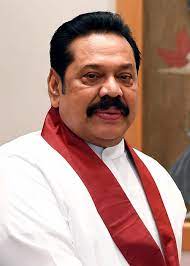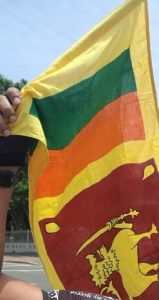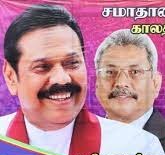
From efe.com
The second half of my tuppence-worth about the current, dire situation in Sri Lanka and the shower responsible for it.
The feel-good factor generated in 2015 by the election to the Sri Lankan presidency of Maithripala Sirisena, and the expulsion from that presidency of Mahinda Rajapaksa, didn’t last for long. As I mentioned in my previous post, inflation got worse under Sirisena, and he soon faced criticisms that in Sri Lankan politics sounded depressingly familiar – about nepotism, corruption and bullying the media. He even managed to make the world’s headlines, and make a dick of himself, regarding Enrique Iglesias of all people. The Latin heartthrob held a concert in Colombo and some excited local ladies threw their knickers at him and ran onstage to kiss him. Such women were ‘highly uncivilised,’ declared the unimpressed president, and he called for the concert’s organisers to be ‘beaten with toxic stingray tails.’
My Sri Lankan colleagues were soon grumbling to me that the new president was as bad as the old one and that the country’s politicians, whatever their supposed political hue, were “all the same.” Their cynicism was spectacularly validated in 2018 when Sirisena tried to remove his Prime Minister, Ranil Wickremesinghe. A constitutional crisis erupted because Wickremesinghe refused to leave office. And who did Sirisena want to replace Wickremesinghe with as PM? Why, Mahinda Rajapaksa, the man whom he’d ousted in 2015.
Sirisena’s attempt to usurp Wickremesinghe failed, but the resulting governmental dysfunction surely contributed to intelligence failures that enabled the Easter Bombings in Sri Lanka the following year. Indian Intelligence had warned that the National Thowheeth Jama’ath (NTJ) were going to carry out a terrorist attack, but no action was taken. 269 men, women and children died as a result. Sirisena’s government later had to apologise for its ineptitude. This was surely the last nail in its coffin – and the beginning of the return of the old dynasty. I remember looking at Twitter on the day of the bombings, just before social media was suspended in an effort to stop the spread of misinformation, and seeing calls for the reinstatement of ‘Iron-man Rajapaksa’ to clean up the mess.
Thus, the election later that year, 2019, was a foregone conclusion. Not that we were spared the usual dodgy campaigning. I was running another training course, this time in the northern, predominantly Tamil city of Jaffna, when the Rajapaksa roadshow rolled into town and a rally was held beside the training building. Sri Lankan politicians like their rallies, although often there’s not much correspondence between the people attending the rally and the location where the rally takes place. Accordingly, I doubt if you’d find many Rajapaksa supporters living in Jaffna, but a great crowd of people still turned up, which possibly had something to do with the dozens of buses parked along the sides of the neighbourhood’s streets. Soon, amplified voices were blasting through the walls of the training building, speechifying in praise of the House of Rajapaksa. I remember the face of one of my trainees, a Tamil Catholic priest, contorting in disgust and rage at them. (Priests had not been spared during the end-of-war massacres in northern Sri Lanka.)
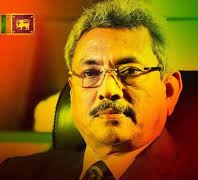
From twitter.com
However, this time, it wasn’t Mahinda Rajapaksa who bagged the presidency. Getting the job instead was his brother Gotabaya, former Secretary of the Ministry of Defence and former Lieutenant Colonel in the Sri Lankan army, less flamboyant than Mahinda but no less mired in allegations of human rights abuses, media intimidation and corruption. Mahinda settled for the post of Prime Minister. Let’s not say those Rajapaksa boys are undemocratic. Meanwhile, youngest brother Basil got the post of Minister of Finance and oldest brother Chamal got the unwieldy-sounding portfolio of ‘Minister of Internal Trade, Food Security and Consumer Welfare, Mahaweli, Agriculture, Irrigation and Rural Development’. In addition, there was now a brood of younger Rajapaksas to accommodate. Chamal’s son Shasheendra became Advanced Agriculture Minister in 2021. Mahinda’s sons Yoshitha and Namal became, respectively, PM’s Chief of Staff and Sports Minister in 2020.
A word about Namal Rajapaksa, until recently seen as the family’s heir apparent, as the man who’d take the reins and ensure that Sri Lanka remained a loyal Rajapaksa fiefdom well into the 21st century. Appropriately for a Sports Minister, he has some sporting achievements on his CV. He’d been a keen rugby player, or as local sports journalists would term it, ‘a keen ruggerite’. (I love Sri Lankan English, but I wish the word ‘ruggerite’ would be expunged from the language.) He captained the national Sri Lankan rugby team from 2013 to 2014, an honour I’m sure he got on account of his playing ability and not who his dad was. In a portent of what his family would do to the country, his captaincy saw the team get demolished 132-10 by Japan. A less funny and far darker rugby connection was, to quote his Wikipedia entry, the allegation of his ‘involvement in (the) murder and torture of Wasim Thajudeen’. Thajudeen was a fellow rugby player whom he had a feud with.
In March this year, when Sri Lanka’s economy had dropped through the floor and the population was panicking about finding fuel and paying for food, Namal lit up the country’s social media with images of himself living it up and enjoying luxury water-sports facilities in the Maldives. It doesn’t surprise me that a friend who got introduced to him at a reception described him as one the most insufferably entitled people he’d ever met.
Thus, the 2019 election resulted in the government being infested with more Rajapaksas than ever.. The great Rajapaksa kleptocracy was back on track. To keep everyone happy, President Gotabaya – ‘Gota’ – initiated sweeping tax cuts, a move that with hindsight was a wee bit unwise.
So, what could go wrong? Well, as we’ve just seen, everything.
Shortly after my departure from Sri Lanka, things got really bad. There were massive, daily power cuts. Photographs and film clips of seemingly endless lines of vehicles, queuing for hours or even days in the heat – heat in which, tragically, several people died – outside depleted petrol stations became familiar images on the world’s media. Meanwhile, protests against the Rajapaksas gathered a head of steam. The protestors, whose slogans included ‘Gota’s gotta go’, must have included many people who’d voted for the clan in 2019. Given the damage inflicted by the fertiliser fiasco, I can’t imagine even the rural, conservative, Sinhalese heartlands feeling any love for them now.

© Lilith & Cupid Studios
Basil Rajapaksa resigned as Minister of Finance on April 8th. Chamal Rajapaksa, now just ‘Minister of Irrigation’, quit five days earlier. Mahinda clung on to the post of PM until May 9th. Then, in an effort to escape resignation, he used the familiar ploy of bussing in supporters to stage a show of strength. This backfired, to say the least. He brought a mob of goons, stooges and thugs to the Prime Minister’s Residence of Temple Trees on Galle Road. The mob assured him that everyone still loved him and didn’t want him to resign. No doubt they got boozed up on free arrack as well. Then they spilled out onto the street, proceeded to Galle Face Green and attacked the anti-government protestors who’d been camped there peacefully for weeks. When the general populace saw what was happening on TV and social media, they reacted in fury and took to the streets themselves. (A timeline of the shenanigans on May 9th is provided here by the excellent factchecking and investigatory group Watchdog, whose founders include the Sri Lankan data scientist and science fiction writer Yudhanjaya Wijeratne.)
It was lucky that the country didn’t tip over into violence and anarchy then. Afterwards, Mahinda Rajapaksa had no choice but to resign. One consequence of the unrest provoked by his stunt was that the Rajapaksa Museum down in Hambantota, built with state funds and using the manpower of the Sri Lankan Navy, got trashed. Talk about karma.
After that, it was just President Gota who, politically speaking, was the last Rajapaksa standing. He didn’t depart until after a deluge of protestors invaded the presidential residence in Colombo’s Fort area on July 9th which led to another glut of images on social media, this time of protestors enjoying the cool waters of the presidential swimming pool, lying on the presidential four-poster bed, watching news coverage of their own demonstration on the presidential TV, and so on. Allegedly, the protestors also discovered bags containing 17.8 million rupees. Even by presidential standards, that’s a lot of loose change to keep lying around the house. Gotabaya didn’t agree to resign until a few days later – after he’d got out of the country. His efforts, and his brother Basil’s efforts, to flee had a tragi-comic quality. Attempts to leave Sri Lanka using commercial flights were thwarted by immigration officials refusing to process their papers and by fears that their fellow passengers would beat them up.
However, Gotabaya has definitely left now. He flew in a military aircraft to the Maldives and from there travelled to Singapore. Yes, at the moment, he’s in the country that I’m in. Indeed, if the rumours are true about him being holed up in hotel in the Singaporean neighbourhood of Orchard, he might only be a stone’s throw away from my workplace. The Singaporean authorities are adamant that he won’t be getting asylum. While he’s here, I’m sure they won’t be taking any advice from him on how to run their economy either.
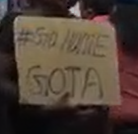
© Lilith & Cupid Studios
While it’s gratifying to see the Rajapaksas scuttle off like this, disgraced and despised, every Sri Lankan I’ve spoken to has insisted that they should stay in the country. They should be put on trial for their many crimes, have their corrupt ways exposed and, most importantly, be stripped of all the money they’ve looted from Sri Lanka during the past two decades. That money should be returned to the country in its greatest hour of need.
What happens next? I’m afraid I’m not optimistic. The Sri Lankan economy is now a disaster, and where there’s disaster, disaster capitalism is never far away. I can see the country being at the mercy of the IMF and having to re-structure its economy in the extreme, impoverishing, free market-worshipping manner described by Naomi Klein in her book The Shock Doctrine (2005). From past experience, that means the sale of public assets, with the result that the majority of people get poorer and an already-rich minority, able to take advantage of the new, rapacious economic climate, become even richer.
Meanwhile, the old Sri Lankan practice of confining politics to a small, wealthy, well-connected elite – which, come to think of it, they may have inherited from the British – shows no sign of going away. The ubiquitous Ranil Wickremesinghe, who’s served as Prime Minster six times (yes, six!) in the past, has now installed himself in the presidency, has denounced the anti-government protestors as ‘fascists’, and has sent in police and security forces to violently clear the protestors from their encampment in Galle Face. All this from a man who on May 9th condemned the attack by Mahinda Rajapaksa’s minions on the same protestors.
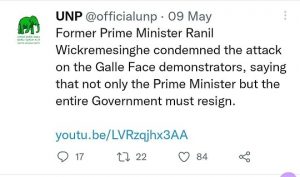
From twitter.com
It’s not the removal of a few, corrupt old faces that Sri Lanka needs. it’s an overhaul of the whole, entitled, business-as-usual political system. But I wonder how much chance there is of that happening.
As the Who sang, “Meet the new boss / Same as the old boss…” But let’s hope Sri Lanka won’t get fooled again.

